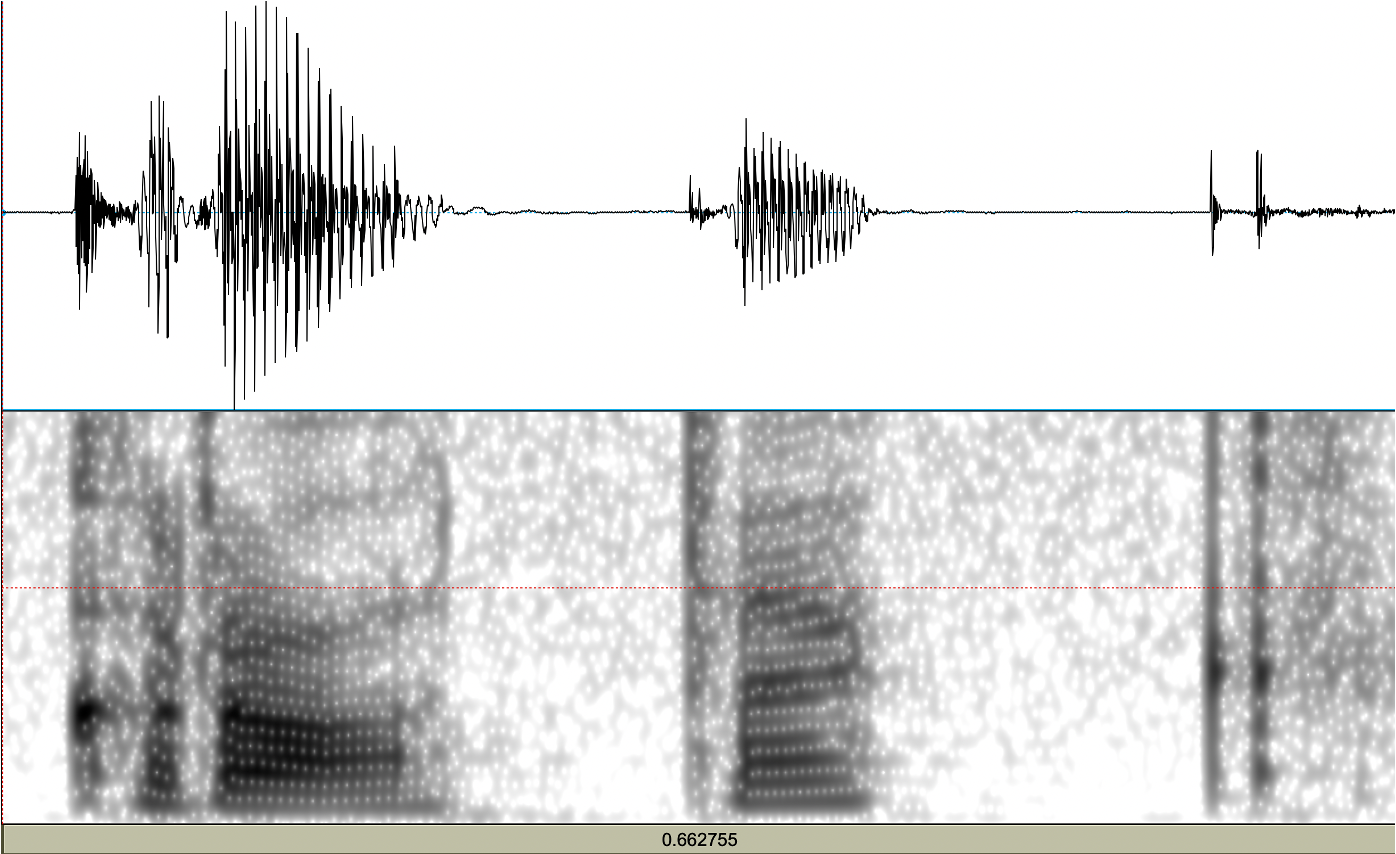



main • research • publications & talks • teaching • cv • email • по-русски • українською • по русиньскы

See my CV for a full list of publications and presentations. Here is a link to my dissertation.
My dissertation investigated the language attitudes toward the use of the voiced velar fricative by native Russian speakers from the city of Voronezh. The study was built upon an experimental methodology promoted and used within the field of folk linguistics, perceptual dialectology and sociolinguistics. Three questions are addressed: (1) What regions are salient in the speakers’ mind, that is have folk status? (2) For Voronezh speakers are there any status categories that are shown to be stigmatized due to the use of the voiced velar fricative in speech? (3) Do speakers of Voronezh uphold or reject myths that there is deviation within the standard and that speech in communities that contain variation are not the standard must switch to the standard for fear of being labeled as uneducated. This study employed a matched-guise technique and a language attitudes survey to explore subjective-reactions of Russian Voronezh speakers to the use of the voiced velar fricative (ghekanye) in speech. The use of the voiced velar fricative in place of the stop is a well-known phenomenon part of a larger linguistic continuum extending from southern Russia through Belarus and Ukraine. The following examples show the standard variant (1.) and the southern variant (2.).
1a. [sjnjeɡə] ‘snow-GEN.SING.’
1b. [got] ‘year-NOM.SING.'
2a. [sjnjeɣə] ‘snow-GEN.SING.’
2b. [ɣot] ‘year-NOM.SING.’
I also believe that these studies are essential to furthering general understanding of the relationship of language and space, not simply in terms of the folk beliefs that are fed into such notions, but also in terms of facilitating conditions on variation in change that have spatial significance. This can be seen in a change of pronunciational norms for certain words. What people actually say not only provides ethnographic, conversational, and other studies of language performance with their raw data but also, by exposing how different groups say things differently, feeds historical linguistics, linguistic geography, and sociolinguistics. The findings and knowledge generated as part of this project will be widely disseminated through professional presentations, publications, and web access. Finally, the research findings have the potential to transform scholar’s conceptualization and measurement of over-reward.
My dissertation shows that even in Voronezh which is located within the continuum of isoglosses where the voice velar fricative is used, that the pressure of the standard language, language standardization, and linguistic insecurity have given rise to the same stigmatization in status categories such as, education, intellect, and having a good job, as is also found among speakers from Moscow and St. Petersburg.
This research explores individuals’ perceptions of how Ukrainian is spoken in various regions of Ukraine. Despite work being done in the area of Perceptual Dialectology (PD) among some western European languages (such as, Egnlish, Spanish, French, and others), to date there is still a paucity of PD information about perceptions and attitudes of Ukrainian in Ukraine. A notable exception being Redkva and Stachowski’s (2019) research conducted in Chernivtsi, Ukraine inquiring “where people speak differently”. For a more detailed description see my article Linguistic tug-of-war: Regional Perceptions of Ukrainian
This present study offers an examination of attitudes and perceptions of the Ukrainian language by respondents who have lived at least half of their life in Ukraine, who were asked to draw on a map of Ukraine - with twelve major cities and the neighboring geopolitical entities indicated on it - “where the most correct Ukrainian is spoken”, and “where is the Ukrainian that grates on one’s ears spoken”. Recruitment for the online survey was conducted by placing ads on several Ukrainian-language Facebook pages, along with a link to the survey. The findings presented are from a total of 50 analyzed surveys. Respondents’ maps were analyzed and compared using QGIS 3.16.2 Geographic Information System software.
The research demonstrates that that there is a tug-of-war of correctness between Kyiv and Lviv as well as showing that there is an overall tendency of native speakers to evaluate the Transcarpathian region as the area that grates one’s ears.




A paper I am working on currently deals with conjugational variation and loss of epenthetic-l in Russian verbs with a labial (P) root. To date, much research has been conducted in shift in thematic verbal suffixes (TVS), especially in the shift from -a- to -aj-. The most common alternation within TVS consists of a shift –a- to –aj-. As a verbal group –a- verbs are not simply unproductive, but that they are continually losing verbs to the highly productive group of –aj- verbs. Despite the work being done on the shift from –a- to –aj-, there is to date paucity of work studying the surface level shift from class I (CI) to class II (CII), specifically regarding the occurrence of alternations between Plj~Pj in Russian verbal paradigms. In order to capture the possible stradding of paradigms and overall shifting process to CII, I propose using a Stratal OT to account for varying behaviors for different classes of suffixes in Russian with respect to palatalization. Ultimately, this study has two very interesting results: 1) that, simply put, a verb will undergo suffix shift at a higher frequency if the root-final consonant is a labial and 2) using the Stratal OT account it can be shown that in the postlexical-level the combination of vowel reduction and the constraint *PljV[+front] can cause the surface form to mismatch with the underlying TVS.
I have an ongoing study on VOT in Bosnian-Croatian-Montenegrin-Serbian (BCMS) that examines the interactions in VOT between singleton modal stops and the stops in liquid sonorant consonant clusters containing /l/ and /r/. The words in this study were spoken in isolation and in sentence context by 22 native speakers from ages 33-67. Spectrograms were made and VOT duration measurements were taken. The results of the data analyze show that there is a trend of increasing in the burst length when the singleton stops are compared to the clusters with sonorants /r/ and /l/ as was found by Klatt (1975).


This study investigates the potential merger of the vowels /ɪ/ and /ɤ/ in Lemko Rusyn, an East Slavic variety spoken in the Carpathian Mountains. Lemko Rusyn, like other Rusyn dialects, contains a system of seven vowel phonemes. This research focuses on the unique Carpathian characteristics of /ɪ/ (‘и’) and /ɤ/ (‘ы’), exploring whether these vowels have merged in speakers born after 1950. The analysis uses data from the Corpus of Spoken Rusyn, specifically examining stressed /ɪ/ and /ɤ/ vowels from Lemko speakers. The historical context of Lemko Rusyn reveals periods of linguistic and cultural suppression, followed by a reintroduction into the educational system. From 1934 to 1939, Lemko Rusyn was taught in schools, but after forced assimilation, it only regained minority language status in Poland in the late 20th century. Since 1991, it has been taught as a mother tongue in state schools. As of 2015, around 281 children study Lemko Rusyn across 35 schools, reflecting ongoing efforts to preserve the language. The study analyzes acoustic data from ten Lemko speakers recorded in 2016, divided into those born before and after 1950. Formant values for /ɪ/ and /ɤ/ were measured at the vowel midpoint using PRAAT software. The phonetic context varied, with initial consonants mostly being bilabial or dental-alveolar stops or fricatives, and following consonants primarily dental-alveolar stops or nasals. Results show a significant distinction between pre-1950 and post-1950 speakers. For speakers born before 1950, the vowels /ɪ/ and /ɤ/ remain distinct, with a high Pillai score (0.62713, p < 2.2e-16) and moderate Bhattacharyya's affinity (0.4606836). Conversely, speakers born after 1950 exhibit a significant overlap, indicated by a low Pillai score (0.044618, p = 0.1312) and high Bhattacharyya's affinity (0.9202455). Individual speaker analysis supports these findings, with pre-1950 speakers showing high Pillai scores and low Bhattacharyya's affinity scores, while post-1950 speakers demonstrate the opposite. Statistical analyses reveal significant changes in the formant values of /ɪ/ and /ɤ/ between the two age groups. T-tests show significant differences in F2 for /ɪ/ (p = 0.036) and F1 for /ɤ/ (p = 0.048), suggesting centralization towards a more merged vowel quality in post-1950 speakers. A notable factor in this vowel merger is the influence of the Polish language. The formant values of the Polish vowel /ɨ/ (F1: 260370 Hz, F2: 17002300 Hz) overlap with those of Lemko /ɪ/ and /ɤ/, implying that Polish dominance may drive the centralization and merger of these vowels in Lemko Rusyn. This phenomenon parallels other cases of language contact, such as Spanish-dominant Galician speakers merging Galician /e/ and /ɛ/. According to Michna (2021), three unique factors exacerbate the assimilation of Lemko Rusyn to Polish: the dispersal of the Lemko community due to historical expulsions, the lack of an external country where Lemko Rusyn is dominant, and the ideological diminution of Lemko as a mere Ukrainian dialect. In conclusion, Lemko Rusyn speakers born after 1950 exhibit a trend towards a merged /ɪ/ and /ɤ/, likely influenced by the dominance of Polish in the region. This study highlights the need for further research, including a larger sample size, additional acoustic analyses, and perception tests to fully understand the implications of this vowel merger on the Lemko Rusyn language.
One of my ongoing projects is a study and analysis of clitics within Carpatho-Rusyn in order to shed light on the ordering and placement of clitics. Data from the Corpus of Spoken Ruysn is analyzed. A clitic is a word (a lexical entry) that lacks word-level prosodic structure, hence must attach to another prosodic word in order to be pronounced. Carpatho-Rusyn has both pronominal and verbal clitics. Within a clitic cluster, the following order is usually found:
| bŷ (je)m,(je)s’, s’me, s’te | mi, ti, jij(jej), mu | s’a | n’a, t’a, ho, ji(ju) |
| Cond. aux. & Pres. copula | Dative | Reflexive | Accusative/Genitive |
| 1 | 2 | 3 | 4 |